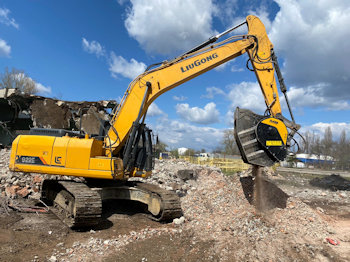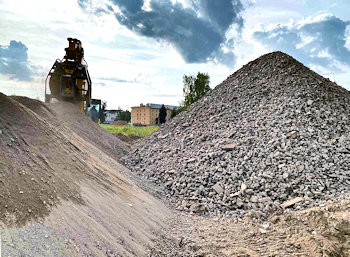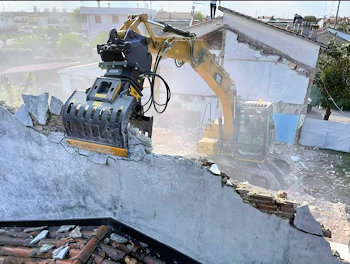With a lack of raw materials and skyrocketing prices, your solution comes from waste material.
It’s a problem affecting everyone, from suppliers to their customers: we’re in the middle of a supply shortage. The planetary crisis behind finding aggregates has hit all sectors, mechanics, and construction and doesn’t seem to have an end in sight. Prices also change from month to month, becoming unsustainable for companies already struggling to meet all of their orders. The jobs are there, but no one knows when they’ll finish them; public and private works risk delaying their construction sites and struggling to recover.
“One of the first things that came to mind about this problem was to manage our materials to become more autonomous and not depend on third parties for everything,” a company, who handles demolitions in Belarus, tells us. “When dealing with demolitions, we have a lot of rubble to dispose of on-site – reinforced concrete, bricks, tiles, reinforced poles, etc. – so we asked ourselves, ‘why not process this rubble directly on-site and reuse them?’ Above all, how do you successfully carry out this process?”
How did they give waste materials a second life? Using a BF70.2 crusher bucket to reduce the material’s size, add an MB-S18 screening bucket and they cleaned and sorted the material on-site with their two excavators. With two attachments and one excavator, they produced quality material themselves, all ready to be reused.
With MB Crusher’s equipment, the rubble becomes a resource capable of keeping the construction site active, even on locations where there aren’t materials readily available, or in areas with difficult access, or within cities while managing restrictions, and be watchful of noise and dust emissions. The whole process takes place on-site and transforms waste crushed and selected to become excellent recycled material. A practical and economically advantageous method makes the process perfectly autonomous, lets them save time and money with disposal fees, and purchasing new materials.
Once transformed, the “clean” rubble can be reused for other jobs, for example, as a foundation to construct new roads. Recently, in Serbia, after demolishing an old commercial building, the mix of bricks, reinforced concrete, and demolition materials has been used to construct the subgrade of the streets in the area. Time and the costs of transporting, disposing, and purchasing new material have been eliminated. All thanks to the MB80.3 crusher bucket installed on the excavator that is already on site.
By facilitating the construction during the process to recover demolition materials, one helpful tool is the MB Crusher sorting grapples. “These are agile and practical machines, perfect both for demolition and when handling post-demolition materials,” says an Italian project manager. The winning feature of MB’s grapples is the unit’s grip sensitivity: it allows extreme precision and progressively increases the closing force.
Thanks to the interchangeable claws and the 360 hydraulic rotation, they managed larger loads and odd shapes despite the confined space.
With MB Crusher’s machines, you receive the advantages of an ethical process when recovering demolition materials, which extends to the environment and community. Thanks to reusing materials, companies don’t have to worry about disrupting the area’s ecosystem, reducing vehicles traveling to and from the demolition area, and decreasing noise and dust emissions. Fundamental discussions surround how responsible companies are becoming more aware of the circular economy-oriented market.
